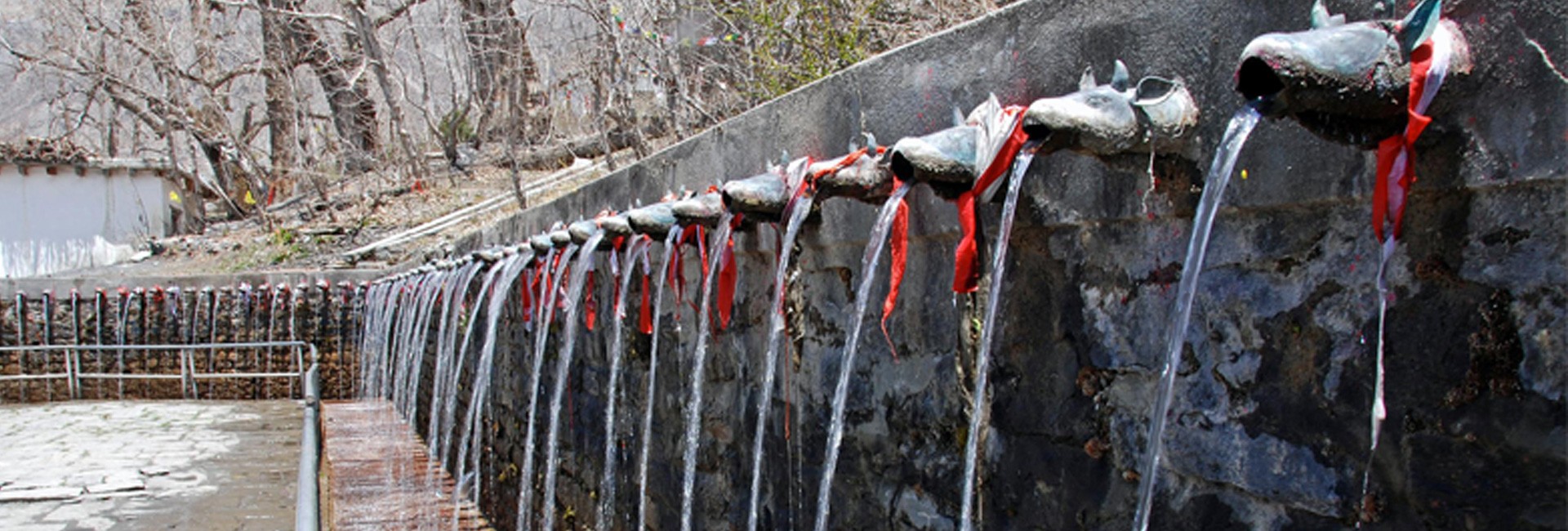This is very important day for us. First we will do Tirtha Snanam in Muktidhara with Sankalpa – 108 water spring then we will do special Archana of Sir Muktinath Perumal, Vishnu Sahasraname Patha, Mulmantra Japa, Hawana and then Alwar Aradhana. After lunch drive back to Jomsom. Free time for Jomsom drive. Evening we will chant Namasankritana Pravachana. Overnight stay in Jomsom.
Muktinath; eastward from the famous Damodar Kunda, the Gandaki-irrigated land of Muktinath lies on the lap of the great Himalayan series consisting Neelgiri, Annapurna and Dhawalagiri mountains. One among eight Bhubaikunthas; the earthly place of heavenly bliss- the holy shrine of Muktinath is located at the altitude of 3,749 meters and at 18 kilometers away from Jomsom, the district headquarter of the renowned tourist destination Mustang in mid-western Nepal. Muktinath shrine is pagoda shaped temple standing atop the hill dedicated to Lord Vishnu. Consorted by the Goddess Bhuneela, the Lord reigns supreme not only in the heart of millions of pilgrims who visit the shrine but also in the Holy Scriptures, which abound with his pious description.
Mukti Kshetra is known in the world both as the abode of the Lord Muktinath -the Liberator- and as the origin-point of the world-sanctifying stream of Muktidhara. Just like the sun liberates the universe from the abysmal darkness and sustains it through the life-nurturing rays, so the Lord Muktinath through His concrete and majestic presence in the temple liberates the devotees from destitution, misfortunes, sins and earthly bonds, and nurtures with a raison d’être- a sense of purpose in the lives of the spiritually dried, psychologically dismantled, economically devastated and physically frail people.
Lord Muktinath is believed to dwell in miniature form in Mukti Kshetra itself whereas beginning from Damodar Kunda down to Triveni in Nawalparasi district is believed to be the body of the Lord in His macrocosmic form. As a result, the terrain beginning from plains of Nawalparasi along the bank of Gandaki River up to the temple in the Mukti Kshetra is hailed as the holy land. The land is also believed to be the place of penitence of Panini, Savant Shringee and chaste Ruru. In addition to the 108 attractive waterspouts behind the temple, there is another temple in the proximity of the Mother Jwala (Goddess of Flame), which is known particularly for the miraculous flame of burning fire inside water. Besides, the shrine is also noted for the availability of the idols of much talked-upon deity Shaligram.
There are a number of people belonging to different religions, sects and communities who wander hither and the thither in the hope of attaining perennial peace and salvation or Mukti. However, the one and the only shrine in the world which promises a perpetual salvation or Mukti is, as suggested by the name itself, Muktinath. Because of these features, Muktinath has been for several decades a favorite pilgrimage destination in the world.



